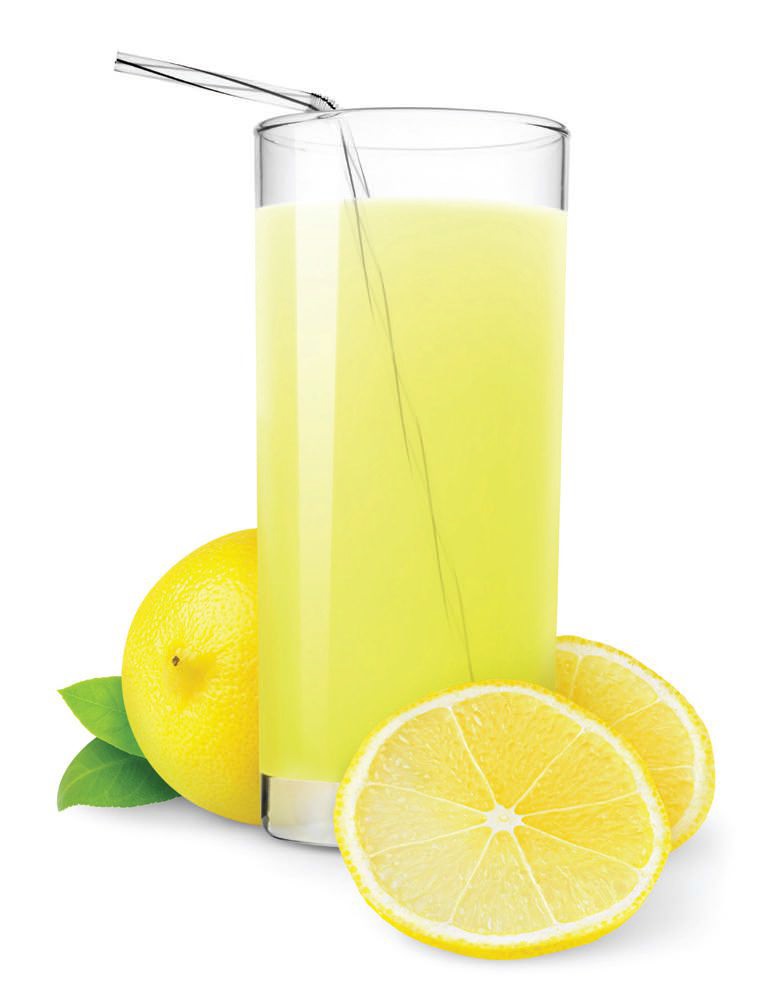Flush with lemons
Evan Zabawski | TLT From the Editor August 2011
Sometimes bitter is better.

It works just as well, but smells a whole lot better.
www.canstockphoto.com
Years ago I was introduced to a unique solvent during an industrial lube oil flush. Between flushing with a cleaning agent and then rinsing with a rinse fluid, the workers enter the system to manually remove the loosened debris. During this flushing stage, small quantities of solvent, typically Stoddard solvent, are required to help clean the inside surfaces of the reservoir.
Using solvents in a confined space results in an assault on the respiratory system, most of which is mitigated by wearing a half-mask respirator. The olfactory system often suffers too, but deodorized solvents have become available to reduce discomfort. Vapor contact with eyes and skin can still be problematic, especially when comfort is valued over wearing personal protective equipment.
The particular job I was involved with had yet another problem arise with the solvent—it was contaminated with debris. Finding a resolution was not as simple as filtration in this case, and it was deemed easier and safer to simply replace the drum of solvent with a new one from the warehouse. When the warehouse could not produce another drum, it was decided to visit a local hardware store for many smaller containers of Stoddard solvent, a.k.a. mineral spirits, paint thinner or brush cleaner.
Upon hearing this edict, someone suggested, “Why don’t we just buy some Delimoline? It works just as well, but smells a whole lot better, like oranges.” Having never heard of this particular product before, I did a Google search to get the spelling right, which is d-Limonene. It is a solvent replacement that is derived from citrus fruit like oranges and lemons, hence the citrus odor.
d-Limonene is a hydrocarbon. In fact it is a cyclic terpene, similar to the pine oil I discussed in my December 2010 column. Two grades of d-Limonene can be made after the citrus fruit passes through a juice extractor. Food grade d-Limonene comes from vacuum distillation of the cold-pressed citrus oil originating from the rind. The technical grade d- Limonene is derived from steam distillation of the peels after they have been turned into slurry.
While the food grade version is mostly used for flavoring foods, the technical grade has proven to be very useful as a cleaner or solvent. Pure d-Limonene solvent can replace methyl ethyl ketone, acetone, toluene, xylene, fluorinated and chlorinated solvents. It does not emit any volatile organic compounds (VOCs) and it is not carcinogenic or genotoxic toward humans. Though, it is biodegradable and is derived from a renewable resource—and it smells very pleasant.
Having a higher flashpoint than both turpentine and Stoddard solvent, d-Limonene is a safer choice for applications like lube oil flushes where a substantial amount of vapor may accumulate in the reservoir. On the other hand, it is still volatile enough to be classified as hazardous waste when disposing of any excess liquid and is able to boil-off once the system is put back into service.
After seeing it in use, I was keen to try it in the laboratory. Since I was performing onsite particle counts of membrane patches, I did not have to wait long for an opportunity. I was very pleased with the results. d-Limonene will cut most petroleum and ester oils for dilution purposes and does a very good job cleaning glassware and sample bottles.
The saying is “when life gives you lemons, make lemonade,” though I think overcoming our contaminated solvent issue with a non-toxic solution (pun intended) is a very literal interpretation. Given that lemonade was first served on Aug. 20, 1630, in Paris and that National Lemon Meringue Pie Day is Aug. 15, this couldn’t be a better month to celebrate another use for lemons!
 Evan Zabawski, CLS, is the senior reliability specialist for Fluid Life in Edmonton, Alberta, Canada. You can reach him at evan@fluidlife.com
Evan Zabawski, CLS, is the senior reliability specialist for Fluid Life in Edmonton, Alberta, Canada. You can reach him at evan@fluidlife.com.